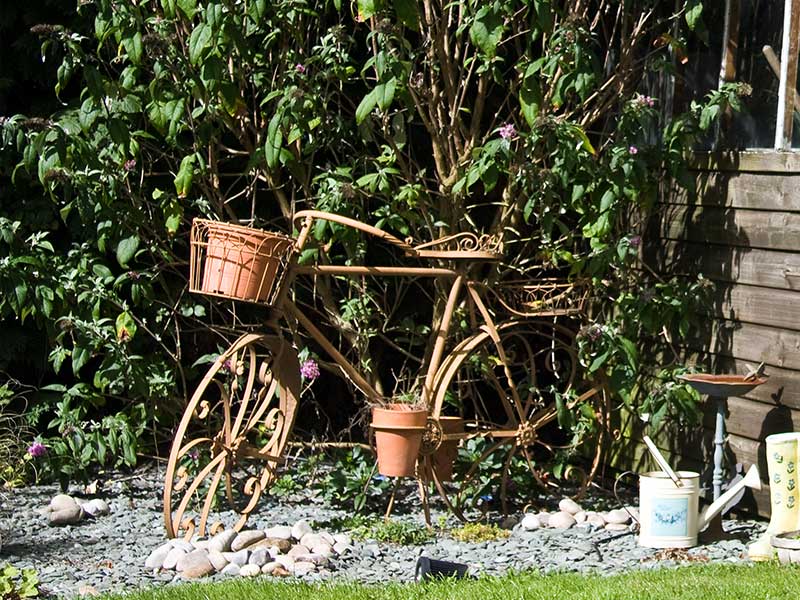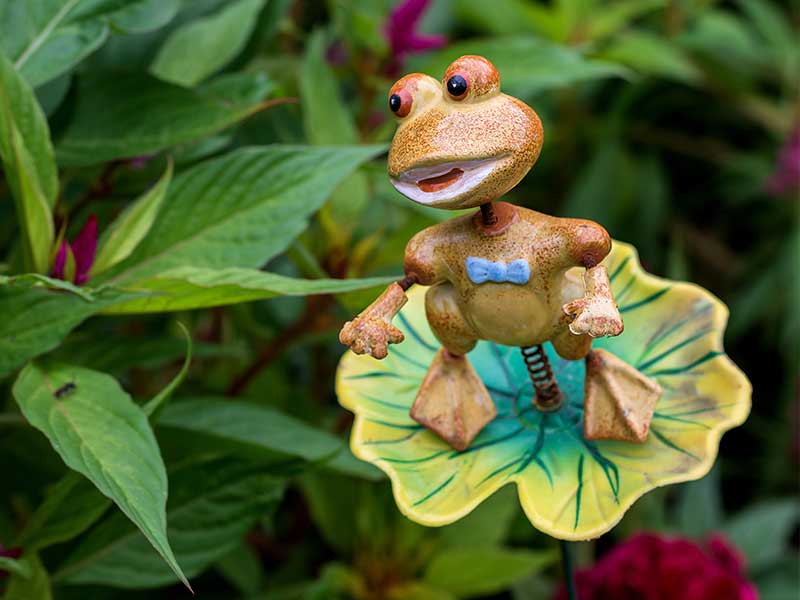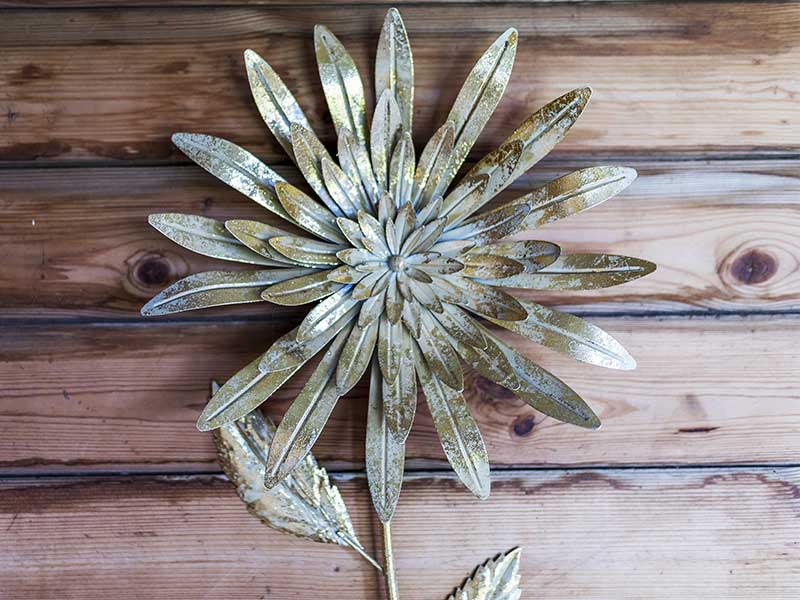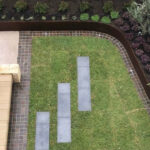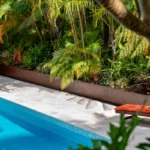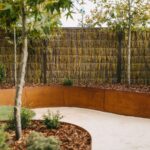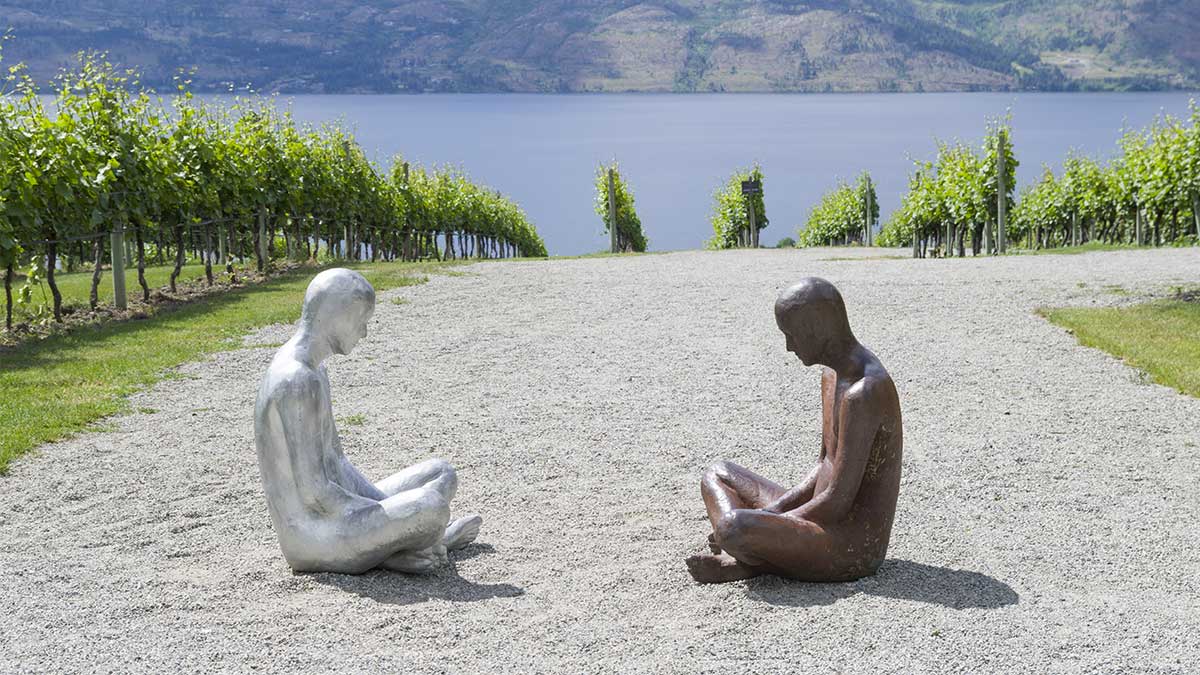
7 Common Questions About Weathering Steel (in style of Corten) and it’s Use In Gardens
We get a lot of questions about Weathering Steel. The answers to these questions below will help your all round understanding of Weathering Steel and why it’s so different from mild steel. This means when you’re considering using steel for any edging, retaining walls or features as part of a garden landscape, you will be better informed about what’s going to work best.
The FAQ Hotlist
- Are Weathering Steel and Corten Steel the same thing?
- Whenever I’ve put any steel ornaments in my garden, they’ve rusted away in a matter of years, won’t that also happen with your edging?
- How long does it last, if it’s rusting? What would be it’s Lifespan?
- I love this orange colour (pointing to a bright show garden edge), Can I buy it like that?
- Will it stain my pavers as it rusts, I’ve seen that happen with Steel?
- I’d like to weld up a channel for a water feature, is Weathering Steel suited to that?
- I saw a friends steel edge flaking, but he said it was Weathering Steel. Should that be happening?
1. Are Weathering Steel and Corten Steel the same thing?
COR-TEN (or simply Corten) is the trademark name for the steel type also referred to as Weathering Steel. The COR relates to corrosive resistance while the TEN relates to it having high tensile strength.
The recipe of alloys prescribed for Corten steel or Weathering Steel, whichever you choose to call it, is what gives this steel the unique qualities it has.
Weathering Steel was originally designed for for rail cars in the 1930’s but soon became popular for bridges and other large outside structures for the look and to eliminate the need for painting; instead they had a stable rust layer on the surface, brought on by time in the weather. This was much easier than painting a bridge and having to start again at the other end by the time you were finished!

Guy paints bridge
2. Whenever I’ve put any steel ornaments in my garden, they’ve rusted away in a matter of years, won’t that also happen with your Weathering Steel edging?
Steel garden ornaments are often made with a thin gauge mild steel because it’s easy to cut and can therefore have more intricate detailing. Simply put, that steel isn’t designed for existing outside in the elements and as it begins to rust, it can rust away quite quickly. The question you can ask when buying such ornaments is whether it’s made of weathering steel and if it’s not, then look at the thickness of the actual steel used. 3-5mm mild steel will also last a fairly long time in any garden, irrespective of the conditions.
As for why the weathering steel used as a garden edge lasts longer, the simple difference is weathering steel is designed to gain strength from being exposed to the atmosphere. As a minimum your looking at it being structurally sound for atleast 10 years. As for how this works, please keep reading…
Cute garden ornaments won’t last so long.
3. How does it last, if it’s rusting away? What would be it’s Lifespan?
Rusting away is exactly what isn’t happening with Weathering Steel. Because of its chemical composition it exhibits increased resistance to atmospheric corrosion compared to mild steel. The steel actually rusts on the surface to form a protective layer we refer to as a ‘patina’(because we’re posh!)
The corrosion-retarding effect of the patina is produced by the particular distribution and concentration of alloying elements in it. The patina develops and regenerates continuously when subjected to the influence of the weather to maintain a protective coat.
Another way to put this is by way of comparison. Normal steel develops rust that is porous with tiny pores in the surface that the eye can’t see. This rust does not seal the steel surface, the rust process therefore never stops and so, tends to flake. Whereas with Weathering steel, the patina produced is much less porous.
The rust ‘patina’ develops under conditions of alternate wetting and drying. To ensure a stable patina develops, this natural cycle is key and the process should never be rushed with salts or acids. The rusting occurs on surfaces where oxygen is freely available. This means that in the ground, rusting happens very slowly due to low oxygen availability. When buried, weathering steel offers no advantage compared to mild steel.
In terms of the lifespan of Weathering Steel garden edging, local conditions such as humidity, salt (soil salinity), acid (soil acidity), soil density (oxygen availability) and sulphur content will affect this. Proximity to salt water is another factor that speeds oxidation up. Under ideal circumstances the weathering steel used in garden edging will last for many decades (maybe even 100yrs!) and in bad conditions expect at least 10 years.
As an extra tip, you can also improve the lifespan or your edging by painting or applying bitumen to the back, top-half before backfilling when using taller steel panels for retaining.
4. I love this orange colour (pointing to a bright show garden edge), Can I buy it like that?
The colour of Weathering Steel alters with time in the elements. We’ve explained why this happens – it is an evolving look!
When you buy it , it will most likely not have been pre rusted. It will gradually shift through shades of orange, reddish brown, brown to almost black over the years when it’s in your garden.
The Weathering Steel edging featured in Show Gardens are typically in the early stages so can have a unique vibrancy and brightness about them.
It is possible to fix the colour of the rust at a certain stage by applying a sealer coat when you’re most happy with the colour achieved. What you choose to do comes down to your personal preference, but yes, it’s possible. Bear in mind that recoating is required depending on the coating used and your local conditions.
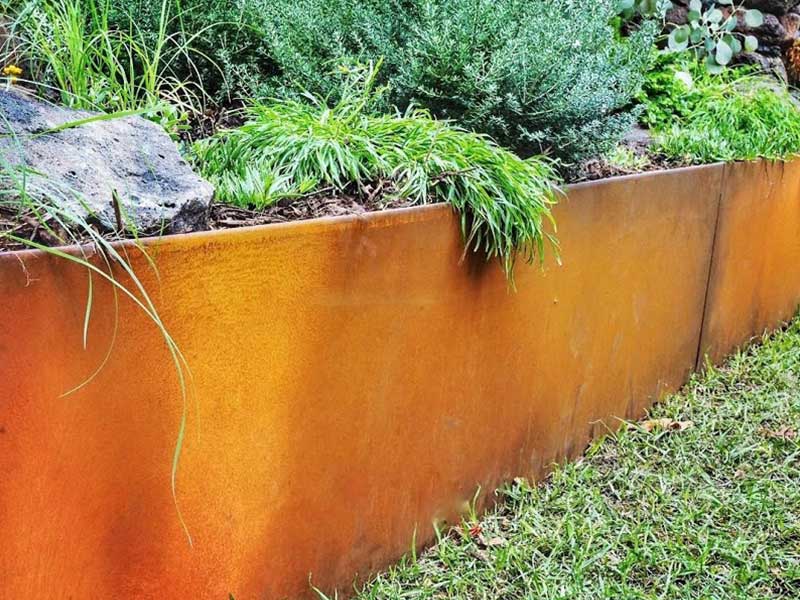
5. Will it stain my pavers as it rusts, I’ve seen that happen with Steel?
I’ve seen that too and agree it’s not a good look. The worst cases of that will involve mild steel because of the way it continues rusting. With Weathered Steel this should only happen when first developing a patina or if rushed artificially to achieve the desired patina.
Regular misting or using a damp cloth to wet the steel without runoff is one way you may avoid this happening so much. If it’s a sensitive install sitting atop pavers and that isn’t doable, you can pre rust the edging before installing to have a stable early phase patina there already. We know of one recipe/solution we’ve used for show gardens, available at well known retailers, that creates a stable patina in a non-harmful way to the steel itself.
Alternatively, simply set the edge back slightly from the pavers– maybe infill with feature stone?– to allow the minimal any runoff to disperse harmlessly. You can even change out the pebbles once the patina is fully developed if you wish later.
Once the patina is fully established, you can rest easy that there won’t be any annoying staining with Weathering Steel.
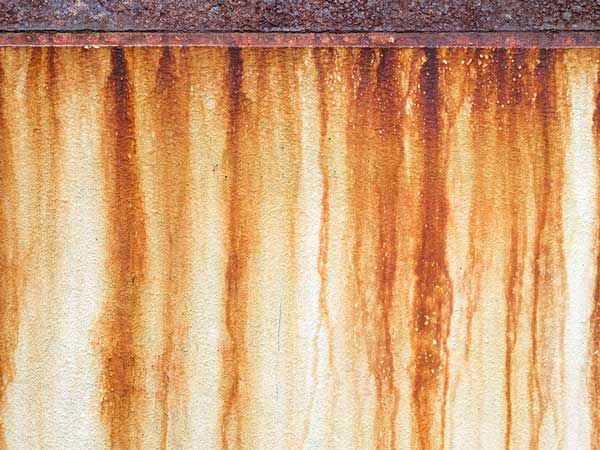
Stain runoff
6. I’d like to weld up a channel for a water feature, Is Weathering Steel suited to that?
Welding of weathering steel is not recommended because of the high phosphorus content in Weathering steel. This means cracking on/within the weld is more likely. Any structural weld would best be done with Corten welding wire( when using MIG or TIG welding) but to our knowledge, no corten rods are currently available for welding.
As an alternative when using rods, stainless steel welding rods can be used. However, these rods have a very high nickel content and the welds won’t rust over creating a distinct weld that’s even more visible on an otherwise rust covered product. Welding with ‘normal’ steel rods should only be used when strength is not an issue due to the cracking effect mentioned earlier.
The other concern is that the process of developing a stable patina relies on the wet and drying cycle. Constant moisture would jeopardise this patina formation, especially at the interface level where the water level fluctuates. This means that the life expectancy is impossible to predict but severely impacted.
For steel water features we recommend the use of normal mild steel. Since that rusts quicker, we recommend to use a minimum of 4mm thickness. You can expect that to last up to 15 years.
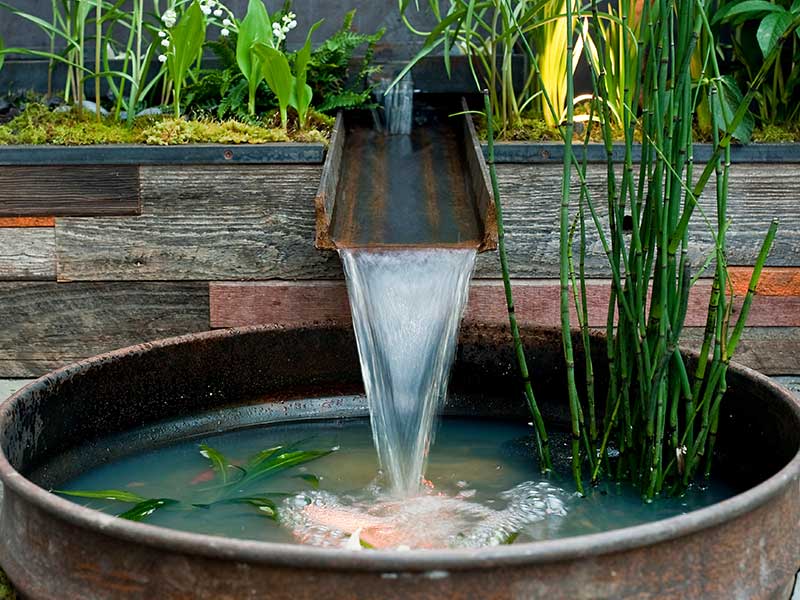
7. My friend has a lawn barrier of steel edging, I noticed it was flaking, but he said it was Weathering Steel. Should that be happening?
This is something we’ve seen happen a few times, typically in situations where the soil/lawn/compost or mulch level has dropped, exposing steel previously in the ground. This portion of the steel edge didn’t get the chance to develop an atmospheric patina, and has rusted normally. An easy solution there is to add back the fill to the level it was once at to slow the process of rusting.
Note though, rust is 7x thicker than its original. 2mm of steel will turn into 14mm of rust! That means 0.3mm of rust comes off in 2.1mm thick flakes. Basically, it looks worse than it is. It doesn’t disappear (unless flakes break off) and will still have some strength to it, it’s just very brittle. As a lawn barrier, like in the picture shown, it still works just fine.
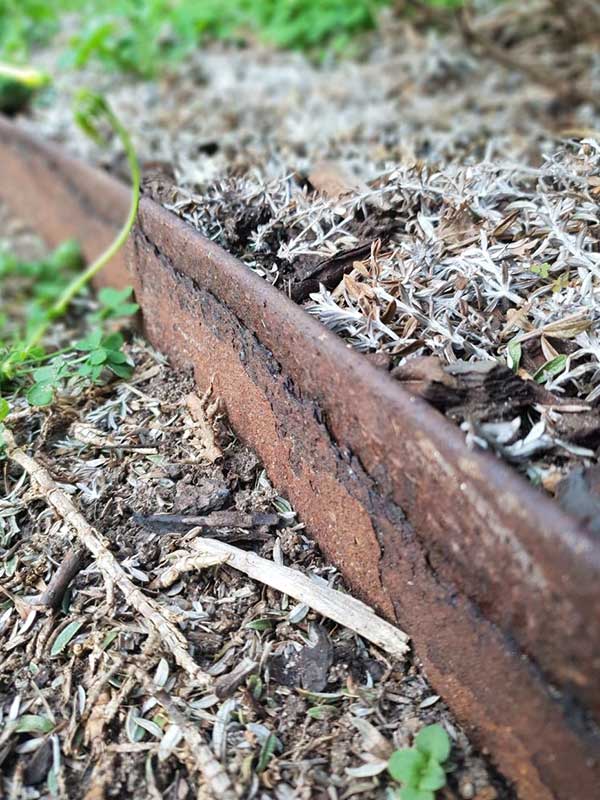
Top portion has a stable patina, below that rust thickening has occurred.
What’s also important to understand is that visibly rusted steel (possibly even flaked) can still develop and maintain a patina and may have done so already; and it will still provide strength to the edge. It also acts like a protective paint so leaving it there (don’t pick it off!) will slow down further rusting.
So yes, it can happen but he will have a great lawn barrier for years to come.
